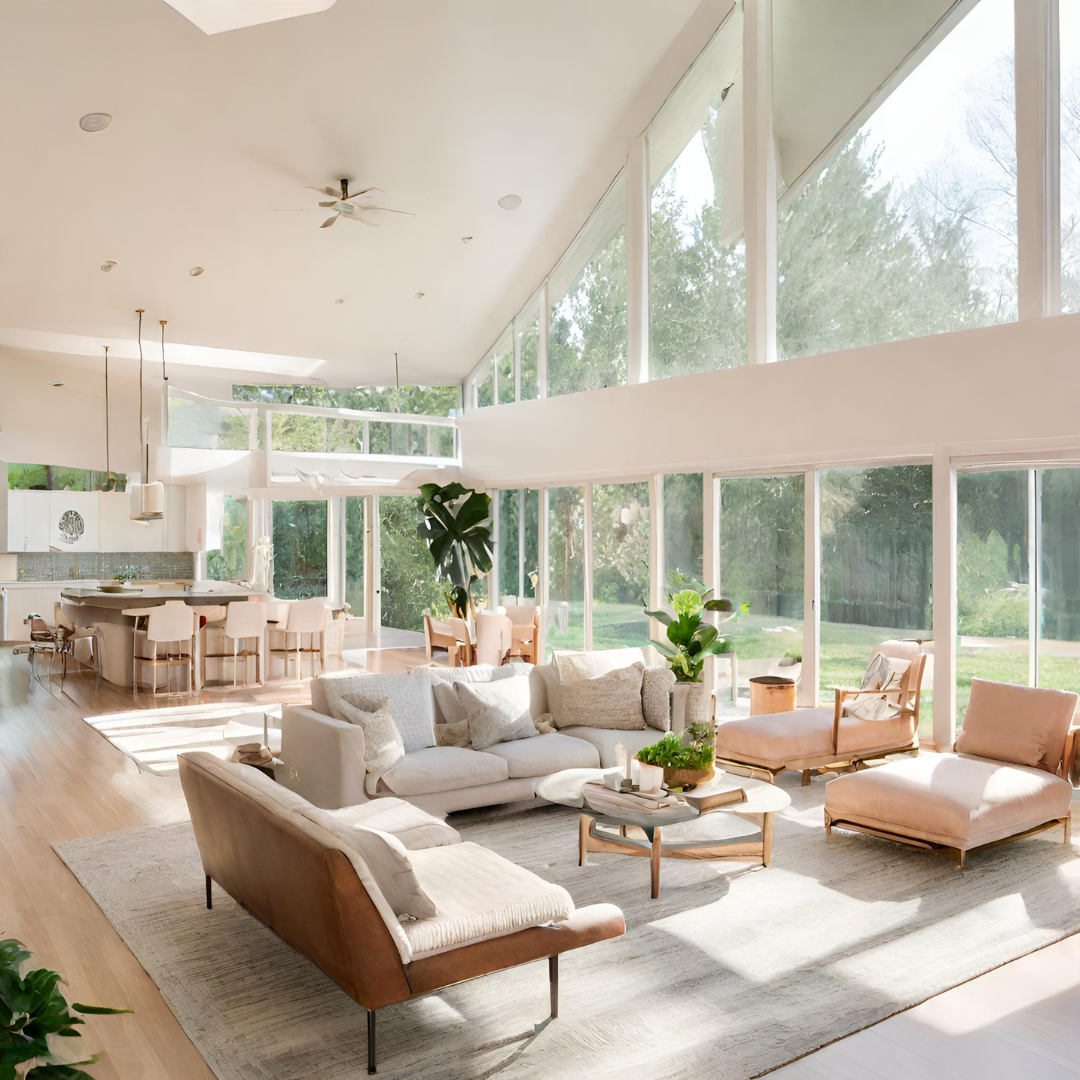
In today's fast-paced world, making the most of your living space is essential. With urban living becoming increasingly popular, open concept living rooms have become the norm. However, limited space can pose a challenge. But fear not! Our transformative construction experts have curated a comprehensive guide that will help you create the illusion of a larger living space while maintaining functionality and style.
Living Large in Limited Space: Open Concept Living Room Hacks
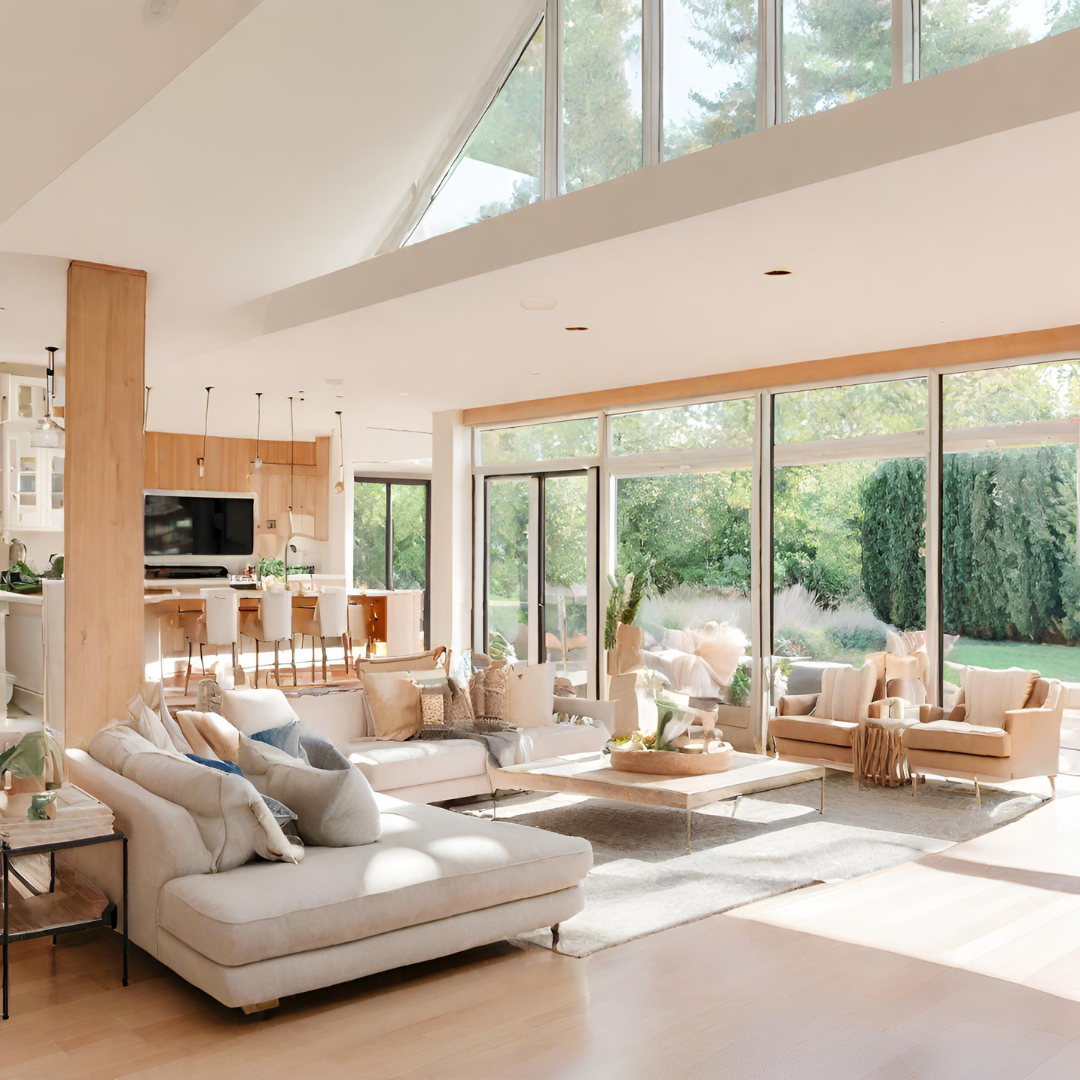
The Power of Illusion
Creating an open and spacious atmosphere in a limited area is all about optical illusions. By strategically placing mirrors and choosing light colors for your walls and furniture, you can make your living room appear larger than it actually is.
Mirrors have long been a secret weapon in interior design. When positioned correctly, they can bounce light around the room, making it feel more open and airy. Place a large mirror on one of the walls, preferably opposite a window, to maximize its effect. This simple trick can instantly transform the perception of space in your living room.
Additionally, opting for light colors for your walls and furniture can further enhance the illusion of space. Soft hues like pale blue, light gray, and creamy white can make your living room feel more expansive. Combine these colors with ample natural light to create a bright and welcoming atmosphere.
Join our FREE Webinar here for a Guide to New Home Construction: bit.ly/newhomeconstructionfreewebinar
Multi-Functional Furniture
Investing in multi-functional furniture is a smart choice for small living spaces. These pieces are designed to serve more than one purpose, helping you maximize every square inch of your room.
Consider a sofa with built-in storage compartments. These hidden storage areas can be used to stow away blankets, pillows, or other items, keeping your living room tidy and clutter-free. Some sofas even come with pull-out beds, providing an extra sleeping option for guests without taking up additional space.
Another versatile piece of furniture is the coffee table that can double as a desk. Look for one with a lift-top feature, allowing it to be used as a workspace when needed. This clever design element can save you the trouble of dedicating a separate area for a home office.

Seamless Flooring
Creating a sense of flow in your open concept living room is crucial for making it feel more spacious. One effective way to achieve this is by choosing a single type of flooring for the entire space.
When there are no abrupt transitions between different flooring materials, the room appears more cohesive and visually expansive. Whether you opt for hardwood, laminate, or tile, consistency in flooring helps create a seamless look. To add depth and warmth, consider using a lighter shade of flooring material that complements your overall design.
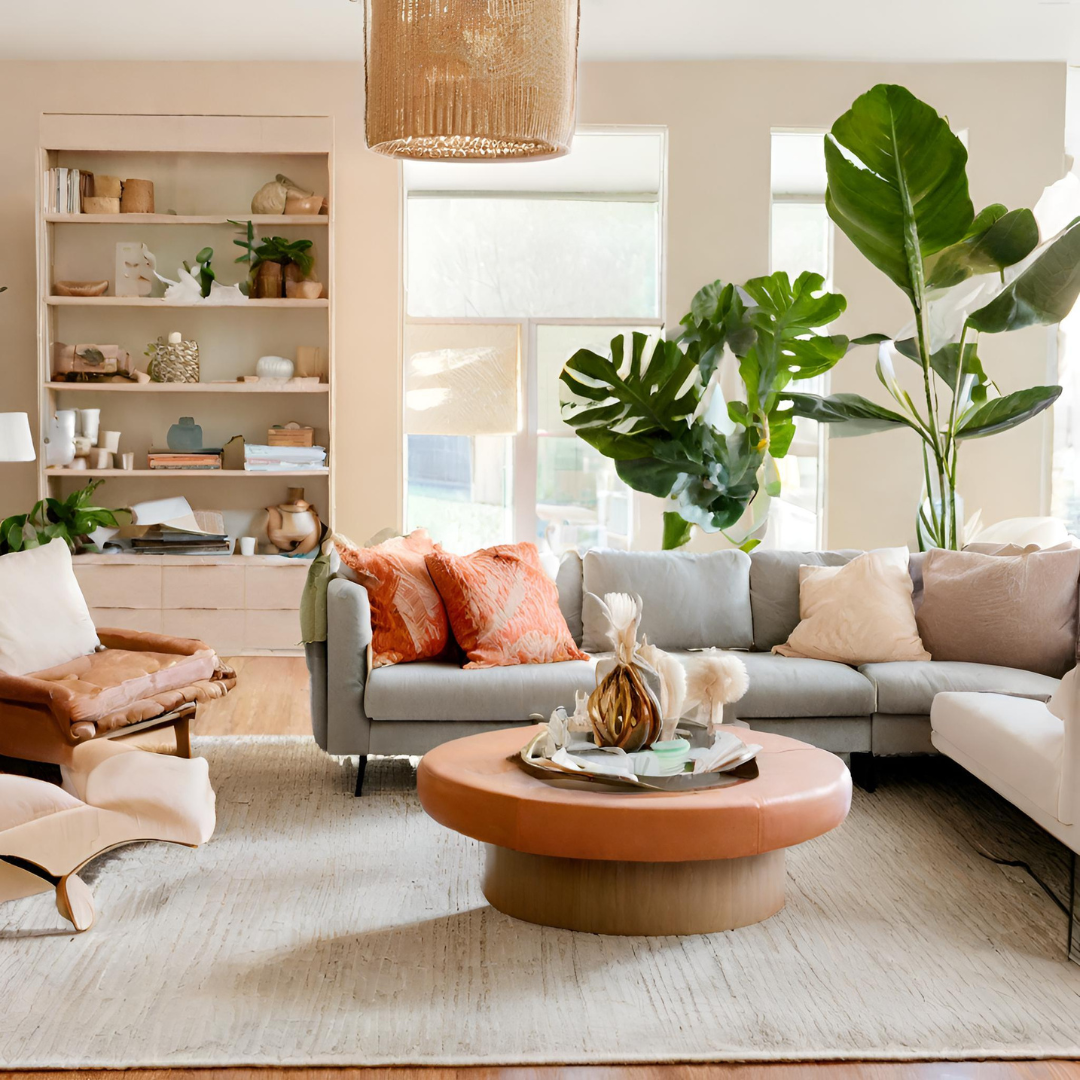
Vertical Storage Solutions
One of the challenges in small living rooms is finding adequate storage space. To overcome this issue, maximize your use of vertical space.
Tall shelves and cabinets that reach up to the ceiling not only provide ample storage but also draw the eye upward, giving the illusion of higher ceilings. Use these vertical storage solutions to keep books, decor items, or even everyday essentials like dishes and glassware. Make sure to choose storage units that match your overall design style, as they will be a prominent feature in your living room.
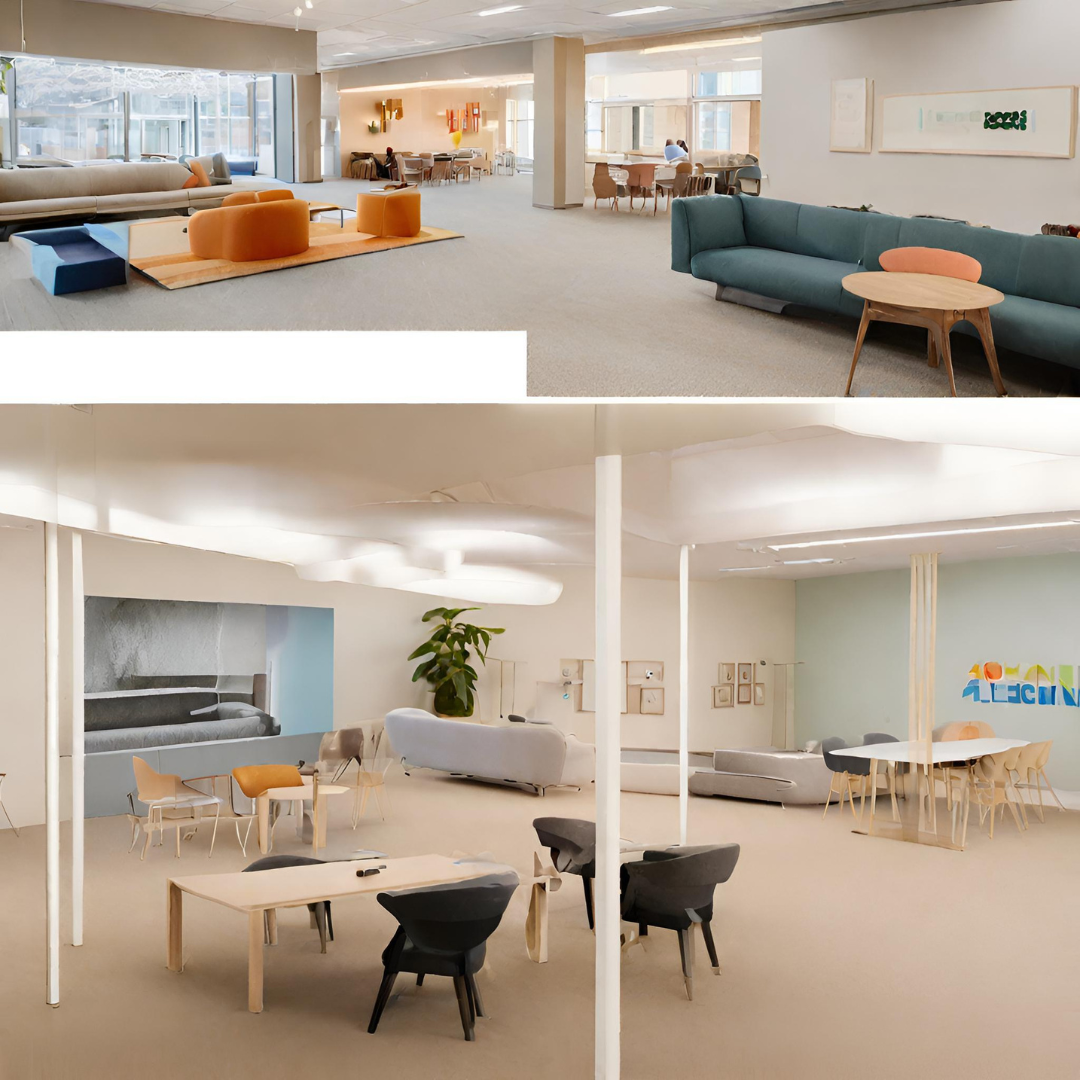
Let There Be Light
Ample lighting is crucial for making a space feel open and inviting. In a small living room, lighting plays a dual role: it illuminates the room and acts as a design element.
To achieve a well-lit living room, consider installing a variety of light fixtures. Start with ambient lighting, which provides overall illumination. This can be achieved with ceiling-mounted fixtures, pendant lights, or even strategically placed wall sconces.
For task lighting, focus on areas where specific activities take place, such as reading or working. Task lighting can be provided by adjustable desk lamps, floor lamps, or wall-mounted fixtures with movable arms.
Accent lighting is the third layer of lighting that adds depth and ambiance to your living room. Use it to highlight architectural features, artwork, or decorative elements. LED strip lights under shelves or behind the TV can create a stunning visual effect and contribute to the perception of a larger space.
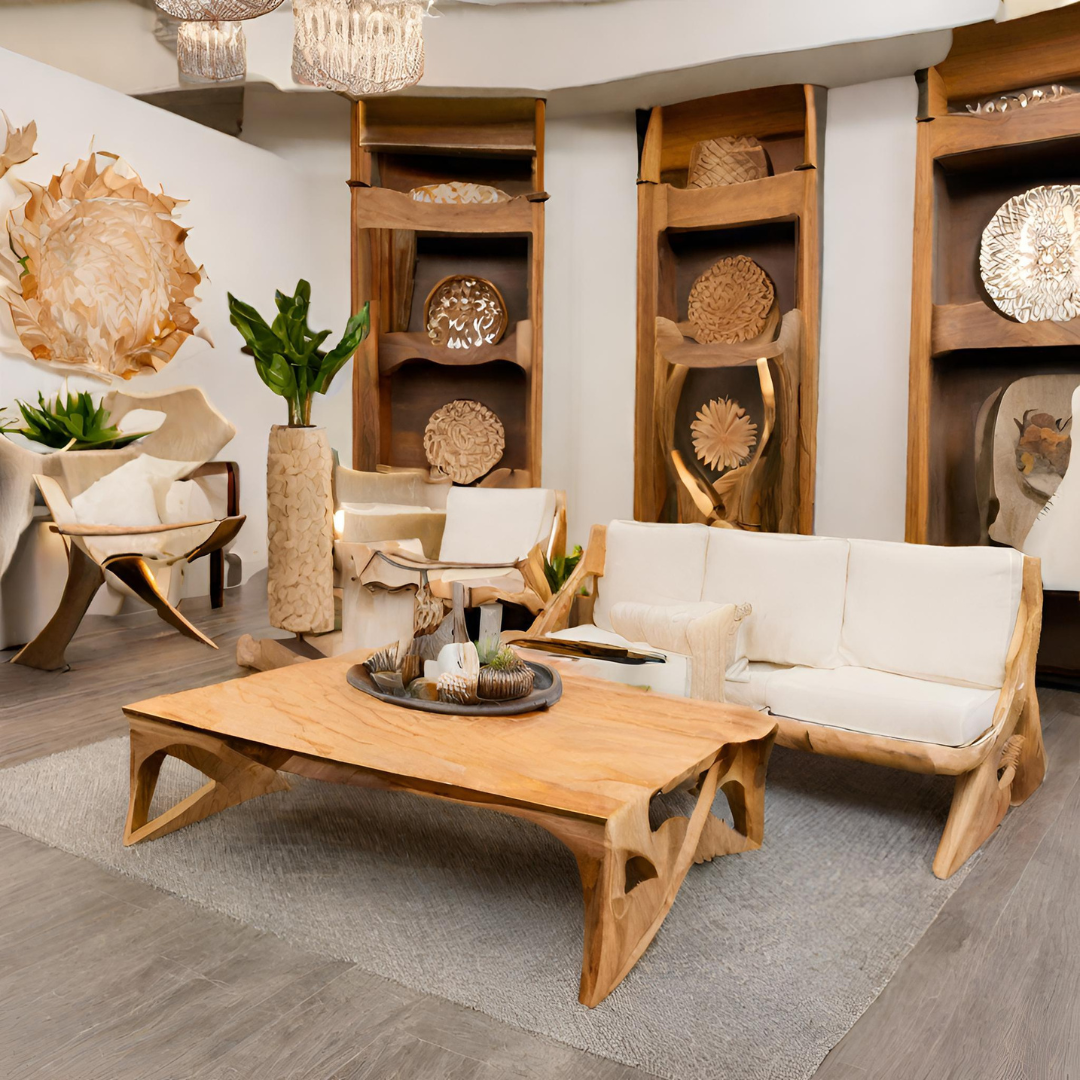
Open Shelving
If you want to make a design statement while also optimizing your space, consider replacing closed cabinets with open shelving units. Open shelving not only adds a decorative touch but also visually opens up the room.
Open shelves are ideal for displaying your favorite decor items, books, or even a collection of plants. They create a sense of accessibility and make your belongings easily accessible. However, it's important to maintain organization and avoid clutter when using open shelving. Keep the items on display purposeful and well-coordinated with your overall design.

Minimalistic Decor
Embracing minimalism in your decor choices can have a significant impact on the perception of space in your living room. Minimalist design principles prioritize simplicity, functionality, and a clutter-free environment.
Start by decluttering your living room and keeping only the essentials. The "less is more" approach is key here. Select furniture with clean lines and avoid pieces that are overly bulky or ornate. Minimalist furniture tends to have a timeless and sleek appearance, making it suitable for various design aesthetics.
Incorporate a neutral color palette with an emphasis on whites, grays, and soft neutrals. These colors create a sense of tranquility and openness. To add visual interest, introduce subtle pops of color through throw pillows, artwork, or a carefully chosen area rug.

Color Psychology
The choice of colors in your living room can significantly impact its perceived size and mood. Color psychology plays a vital role in interior design, and understanding how colors affect our perception can help you create the desired atmosphere.
Lighter colors such as whites, light grays, and pastels tend to make a room feel more spacious. They reflect more light and create a sense of airiness. These colors are particularly effective when used for walls, ceilings, and larger pieces of furniture.
On the other hand, darker hues like deep blues, rich browns, or dark greens can create a cozier and more intimate atmosphere. While they may not make your living room appear larger, they can add warmth and sophistication to the space. Consider using darker colors as accents through decor items, upholstery, or accent walls.
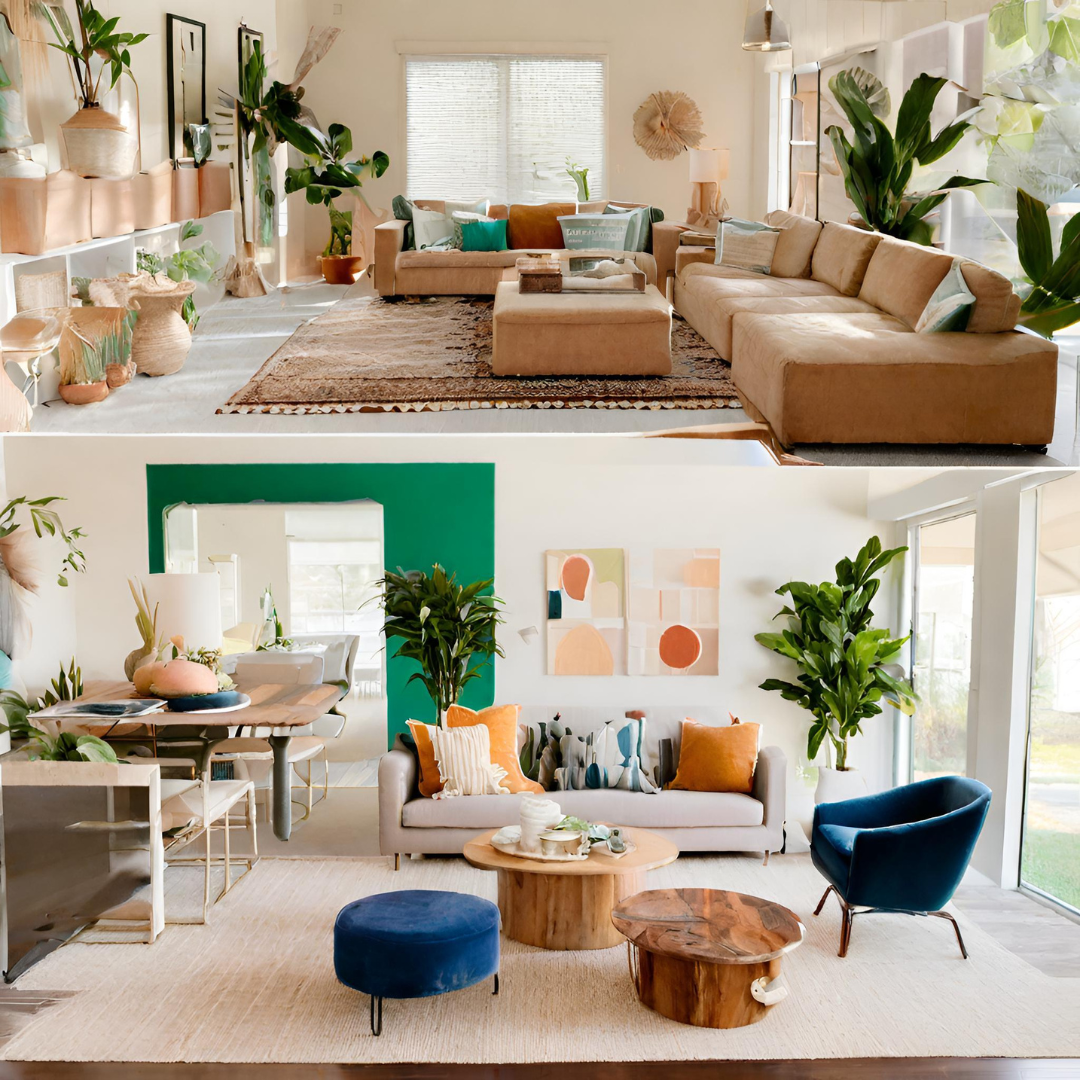
Scale and Proportion
When selecting furniture and decor for your small living room, it's essential to pay attention to scale and proportion. The size of your furnishings should harmonize with the dimensions of the room.
Oversized furniture can quickly overwhelm a small living room, making it feel cramped and crowded. Instead, opt for pieces that are appropriately scaled for your space. Compact sofas, armchairs, and coffee tables can provide both comfort and functionality without dominating the room.
Consider the layout of your living room and the placement of furniture. Ensure there is enough space for comfortable movement and that your seating arrangements allow for easy conversation. A well-proportioned room will feel more balanced and inviting.
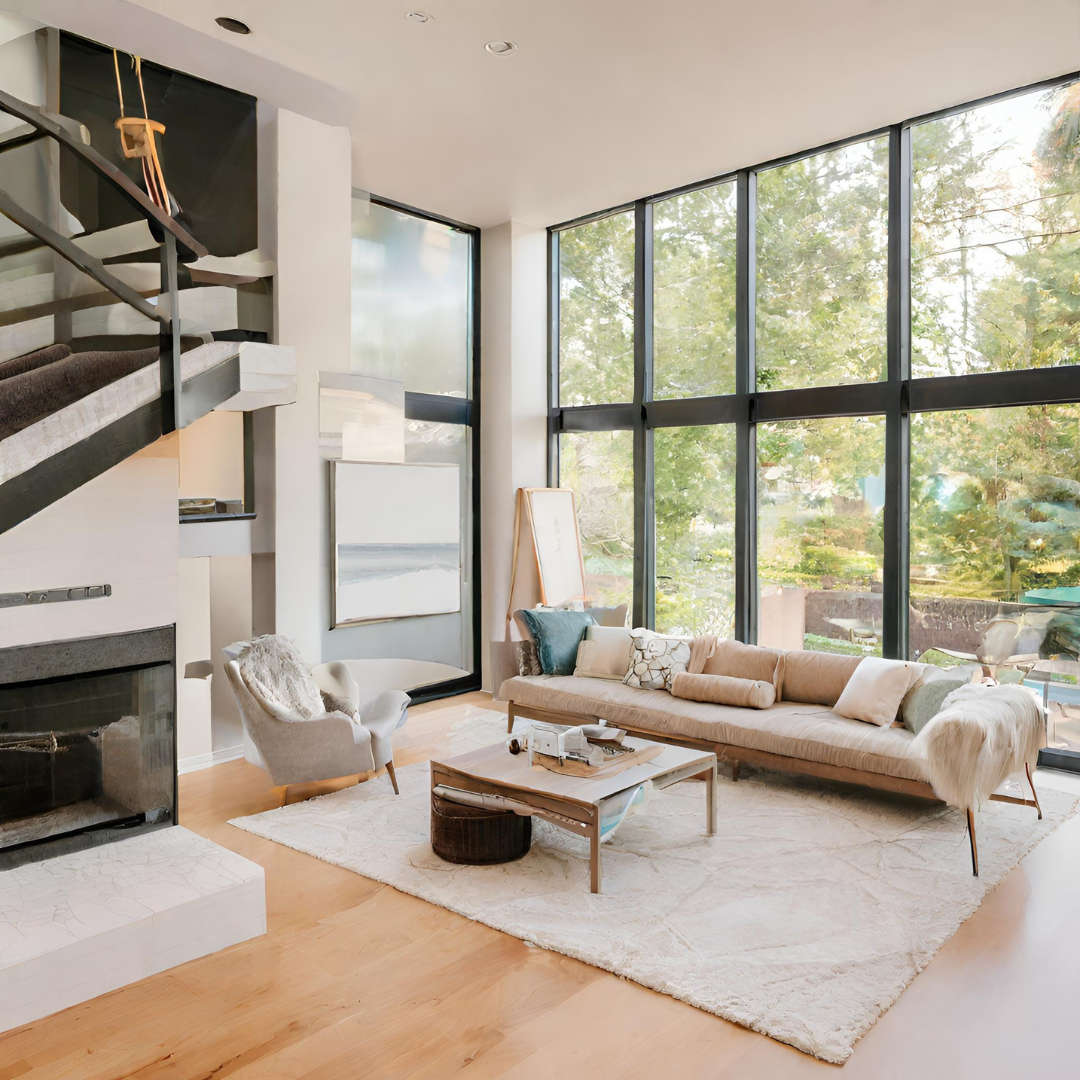
Area Rugs
Area rugs serve both functional and aesthetic purposes in a living room. They can define separate areas within your open concept space, provide comfort underfoot, and add a layer of texture and style.
When choosing an area rug for your small living room, consider its size and placement. A rug that is too small can make the room feel disjointed, so opt for one that adequately covers the seating area. It's also essential to coordinate the rug's colors and patterns with your overall design scheme.
To visually expand the space, select a rug with a light or neutral background color. This will create a sense of continuity with the flooring, making the room feel more open. Additionally, a rug with a subtle pattern or texture can add visual interest without overwhelming the space.

Smart Technology
Incorporating smart technology into your living room design can not only enhance convenience but also give your space a modern and futuristic feel. Smart devices and systems can streamline various aspects of your daily life and improve the functionality of your small living room.
Consider starting with a smart lighting system that allows you to control the brightness and color temperature of your lights through a smartphone app or voice commands. This can help you set the right ambiance for different activities and times of day.
Smart thermostats are another valuable addition, as they can help you efficiently manage your heating and cooling systems, saving both energy and money. Some models even adapt to your preferences and schedule, optimizing comfort without unnecessary energy consumption.
Entertainment systems can also benefit from smart technology. Invest in a smart TV that can connect to streaming services and other devices seamlessly. Voice-activated assistants like Amazon Alexa or Google Assistant can further enhance the convenience of your living room by allowing you to control various functions with voice commands.
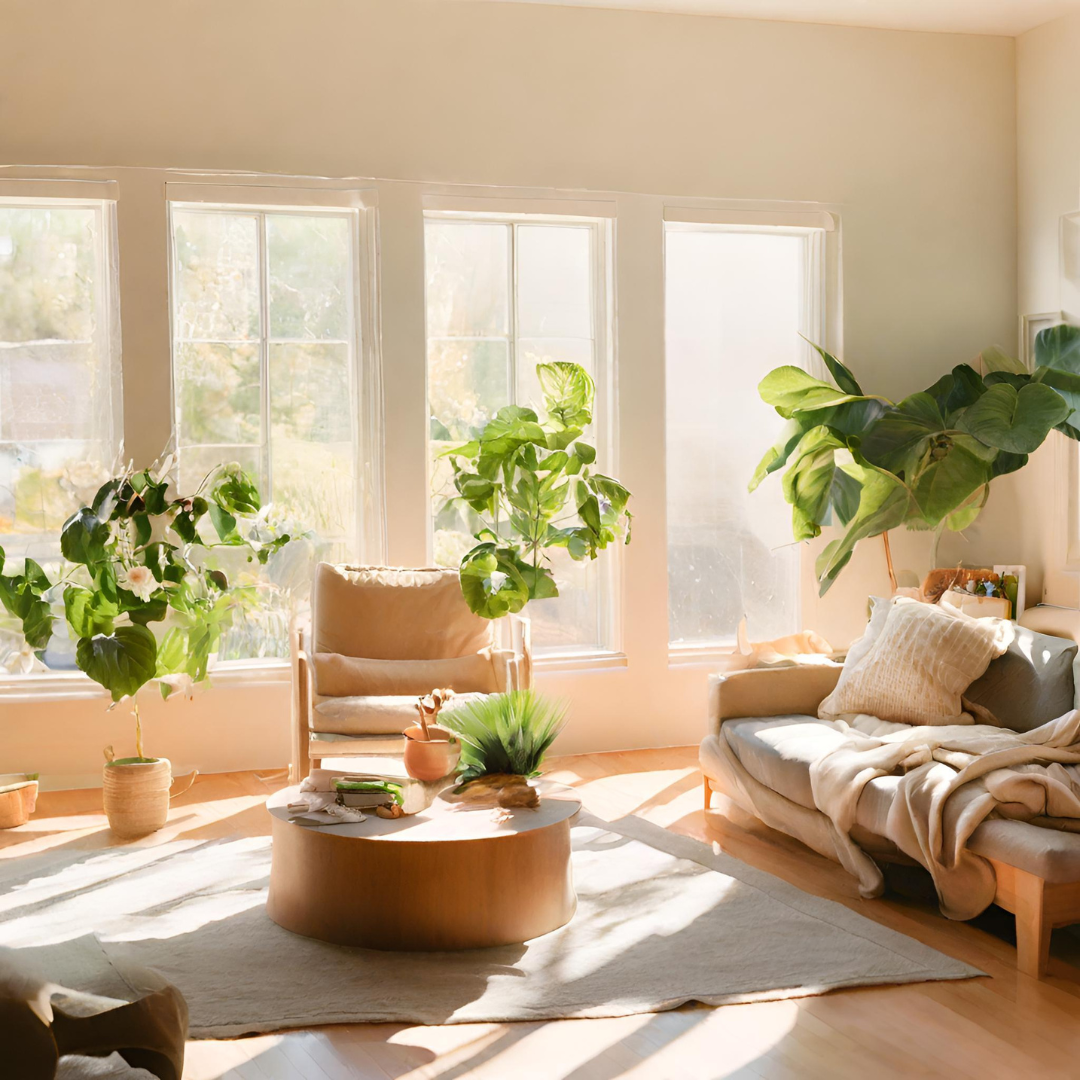
Indoor Plants
Bringing a touch of nature into your living room can have a transformative effect on the space. Indoor plants not only add visual appeal but also contribute to improved air quality and a sense of vitality.
When selecting plants for your small living room, consider the available space and light conditions. Opt for smaller, low-maintenance plants if space is limited. Succulents, snake plants, and pothos are excellent choices that thrive indoors and require minimal care.
Place your indoor plants strategically to create focal points and add a sense of verticality. Hanging plants or tall potted plants can draw the eye upward, making the room feel taller. Decorative plant stands or wall-mounted planters are also options for adding greenery without taking up valuable floor space.

Space Dividers
If your open concept living room also serves as a dining area or workspace, you may want to consider using room dividers or screens to create separation without closing off the space entirely.
Room dividers come in various styles, from folding screens to bookshelf partitions. Choose one that complements your overall design and serves your functional needs. For example, a bookshelf divider can provide additional storage while defining different zones within your living room.
Screens can also be used creatively to section off areas. Consider using a decorative screen with intricate patterns or textures to add a touch of elegance to your space. When not needed, screens can be easily folded and stored away, making them a flexible solution for small living rooms.
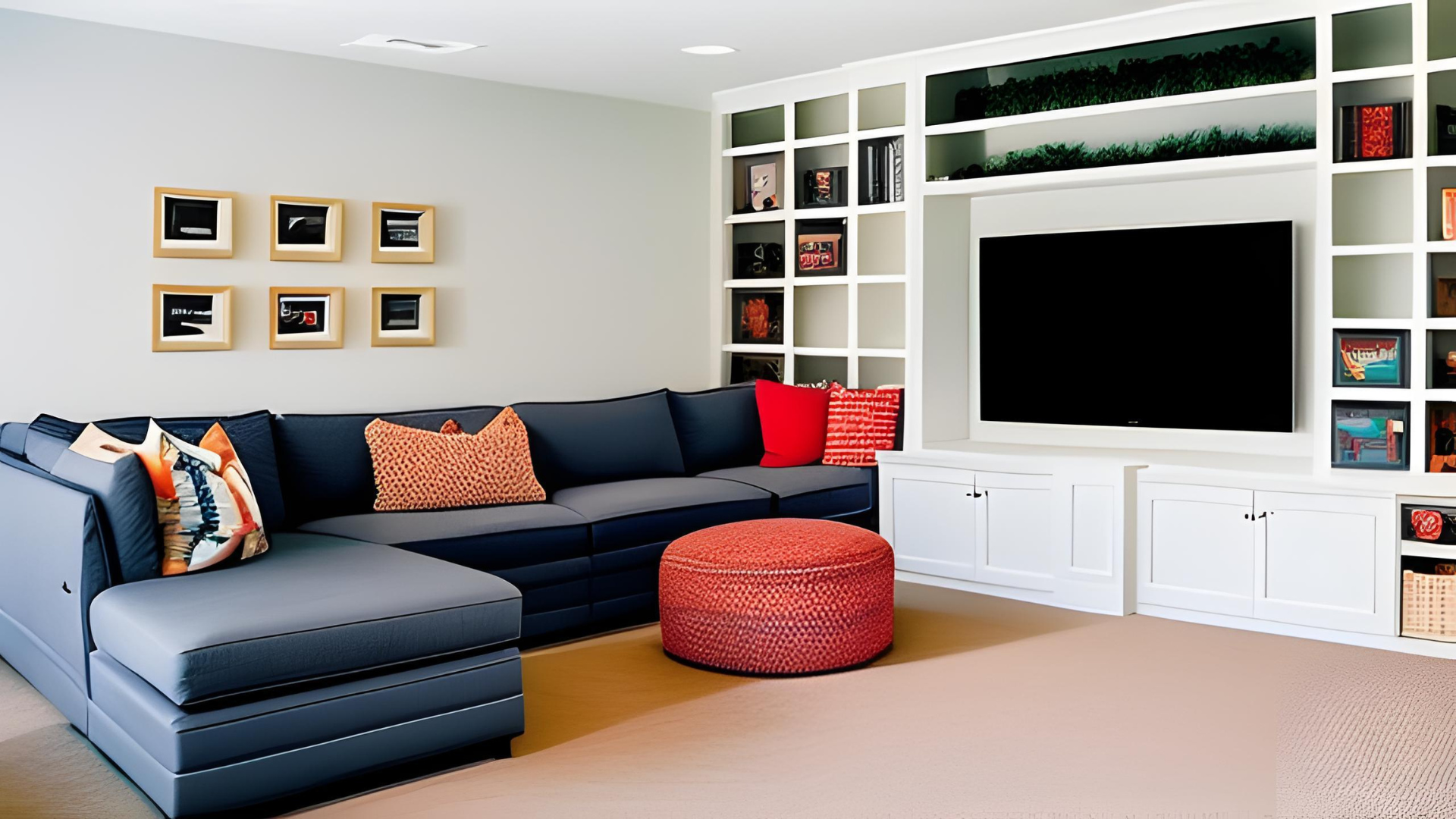
Wall-Mounted Furniture
Opting for wall-mounted furniture is an excellent strategy for freeing up valuable floor space in your small living room. Wall-mounted pieces not only appear visually lighter but also create a sense of openness.
Consider wall-mounted shelves or cabinets to store books, decor items, or even your entertainment system. This approach allows you to keep the floor area uncluttered while showcasing your belongings in an organized and stylish manner.
Floating desks are another innovative option for small living rooms. Whether you need a workspace for remote work or a designated spot for creative projects, a wall-mounted desk can provide functionality without compromising your living space.

Reflective Surfaces
Incorporating reflective surfaces into your living room design can amplify the perception of space and light. Materials like glass, mirror, and metallic accents can bounce light around the room, making it feel brighter and more open.
Consider a glass coffee table as the centerpiece of your living room. Its transparent surface creates a sense of openness while allowing the rug or flooring beneath it to remain visible. Additionally, glass reflects both natural and artificial light, contributing to a well-lit environment.
Metallic accents in the form of decor items, lighting fixtures, or furniture legs can add a touch of glamour to your living room. The reflective quality of metals, such as chrome or brass, can create visual interest and make the space feel more luxurious.
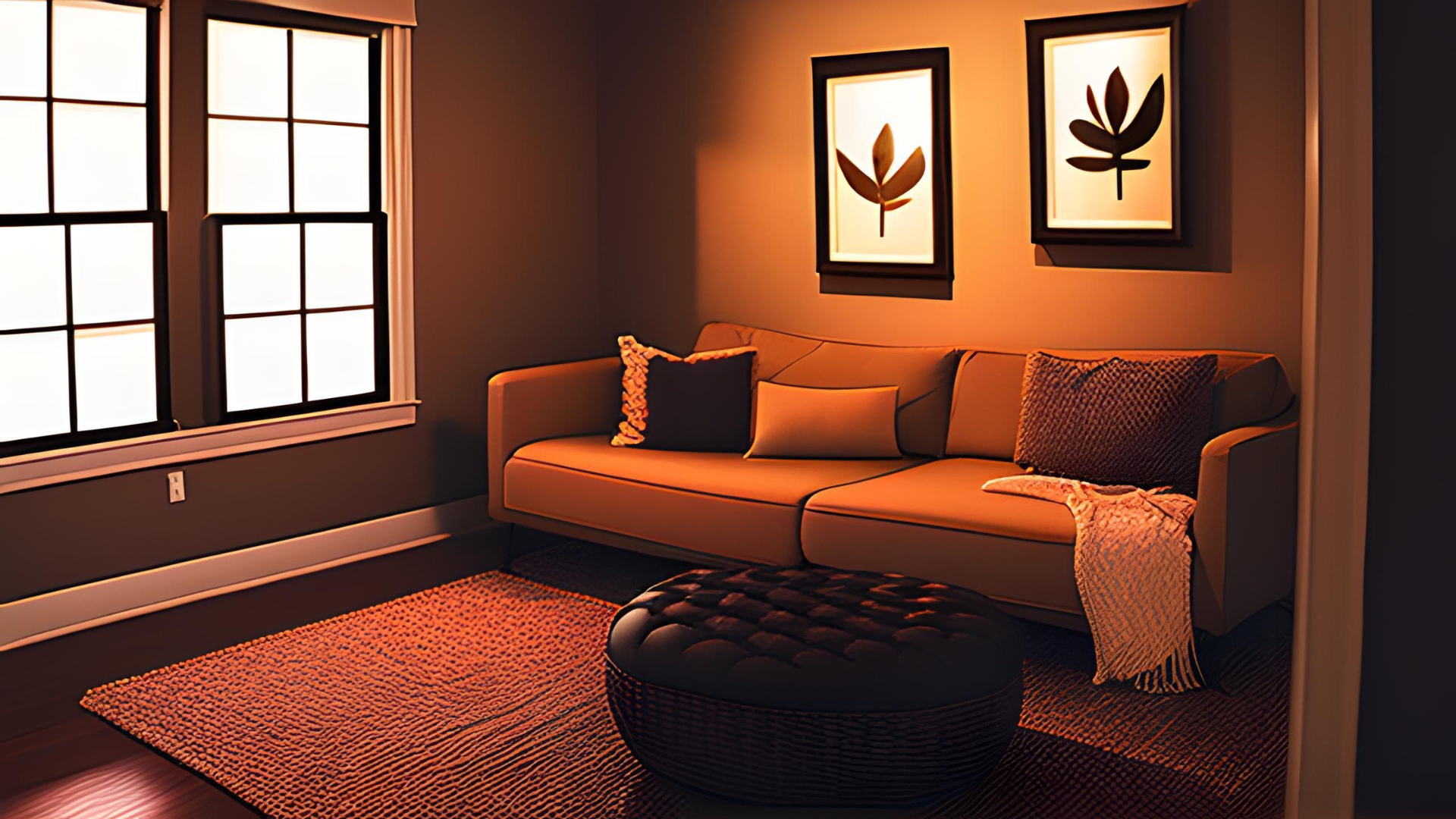
Textures and Patterns
Introducing a variety of textures and patterns into your decor can add depth and interest to your small living room. While maintaining a minimalist approach, you can use textures and patterns strategically to create a visually engaging environment.
Consider incorporating textured fabrics into your upholstery, such as a sofa with a tactile weave or accent pillows with embroidered details. These textures can invite touch and create a sense of coziness.
When it comes to patterns, choose them sparingly to avoid overwhelming the space. A well-placed patterned area rug, a set of patterned throw pillows, or patterned curtains can add personality and style without dominating the room.
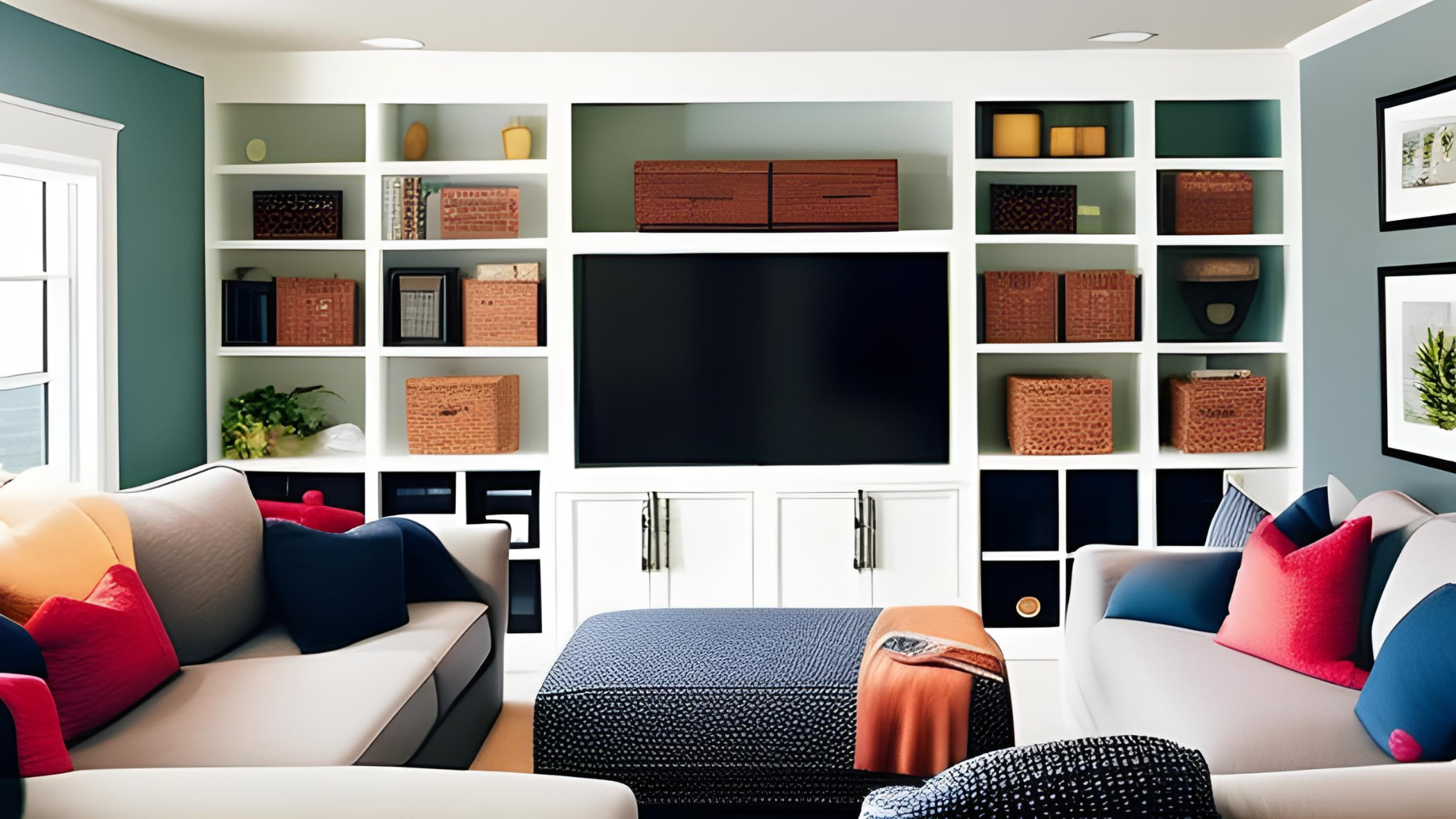
Built-In Storage
Custom-built storage solutions are a game-changer when it comes to maximizing space in a small living room. Unlike standard furniture pieces, built-in storage can make the most of every nook and cranny in your room.
Consider hiring a professional carpenter to design and install custom shelves, cabinets, and built-in seating. These elements can seamlessly blend into your living room's architecture, providing storage while maintaining a cohesive and polished appearance.
Built-in storage solutions can be tailored to your specific needs and preferences. Whether you require hidden compartments for electronics or display shelves for your book collection, custom-built options offer versatility and functionality.
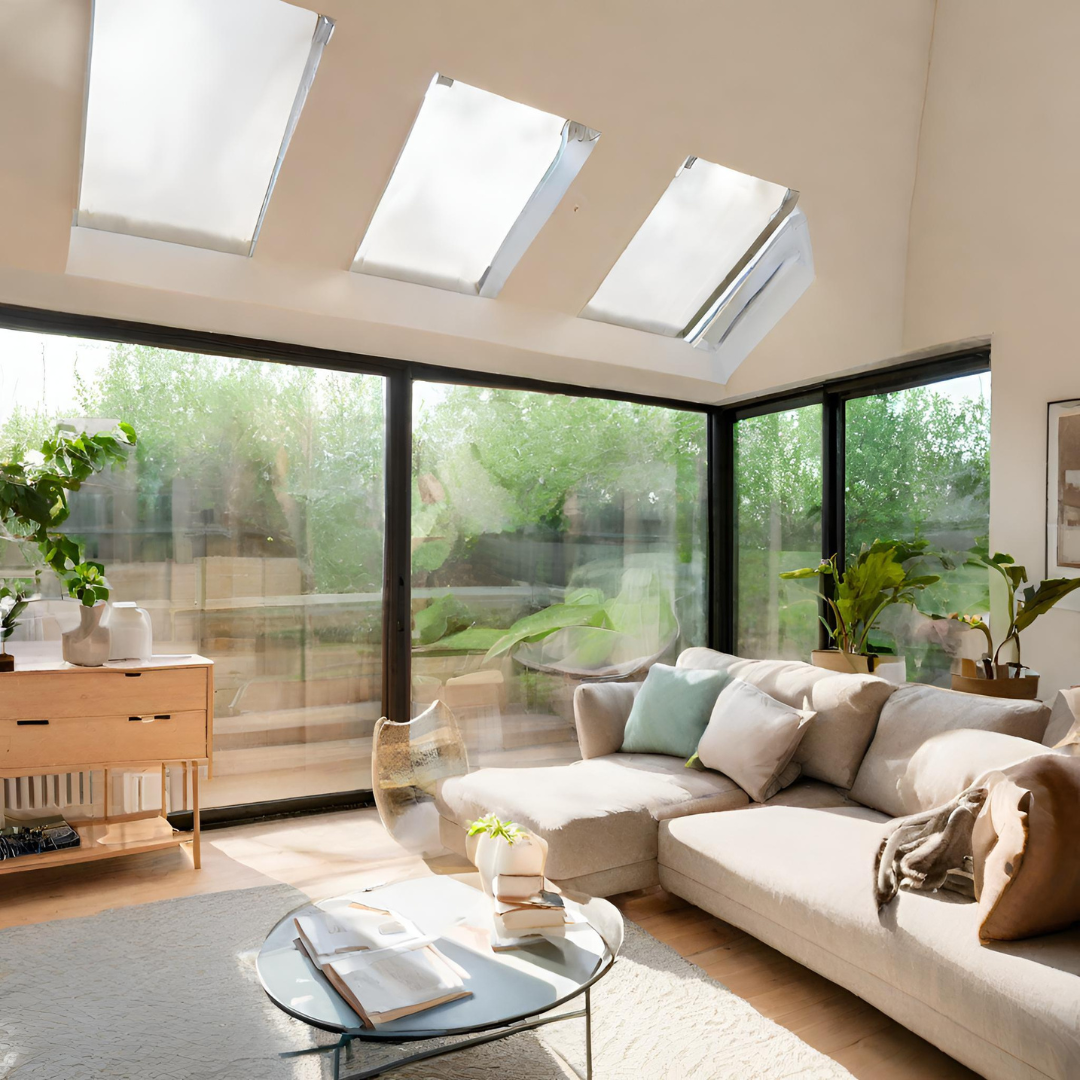
Flexibility Matters
In a small living room, flexibility is key. Your furniture and decor should adapt to your changing needs and arrangements.
Modular furniture is an excellent choice for a small living room. These pieces can be rearranged to suit different layouts and purposes. For example, a sectional sofa with detachable pieces can be configured in various ways to accommodate seating or create an open space.
Consider investing in furniture with wheels or casters. Mobile furniture pieces, such as a bar cart or a movable coffee table, provide versatility and make it easy to rearrange your living room whenever necessary.
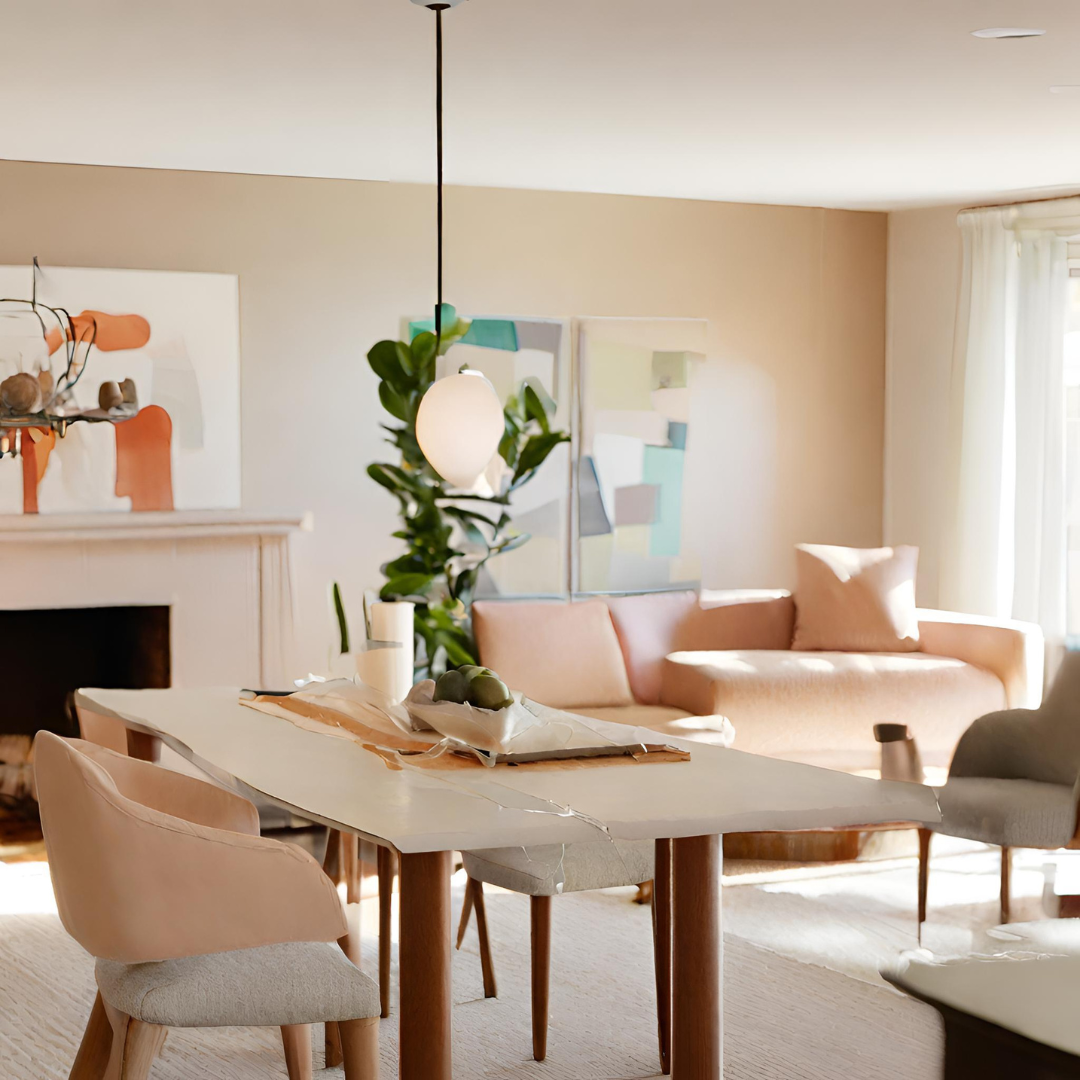
Open Concept Kitchen
Many modern homes feature open concept living rooms that connect seamlessly to the kitchen. While this layout offers a sense of spaciousness, it also presents design challenges.
To create a harmonious flow between your open concept living room and kitchen, follow these tips:
- Consistent Color Palette: Use a consistent color palette for both areas. This creates visual continuity and a sense of unity.
- Open Shelving: Consider open shelving in the kitchen. It not only provides practical storage but also complements the open concept design.
- Island or Bar: If space allows, include a kitchen island or bar with seating. This serves as a natural divider between the two spaces while also providing an informal dining area.
- Coordinate Decor: Ensure that the decor in both the living room and kitchen complements each other. Use similar materials, textures, and color schemes to create cohesion.
- Lighting: Pay attention to the lighting in both areas. Consistent lighting styles can enhance the connection between the spaces.
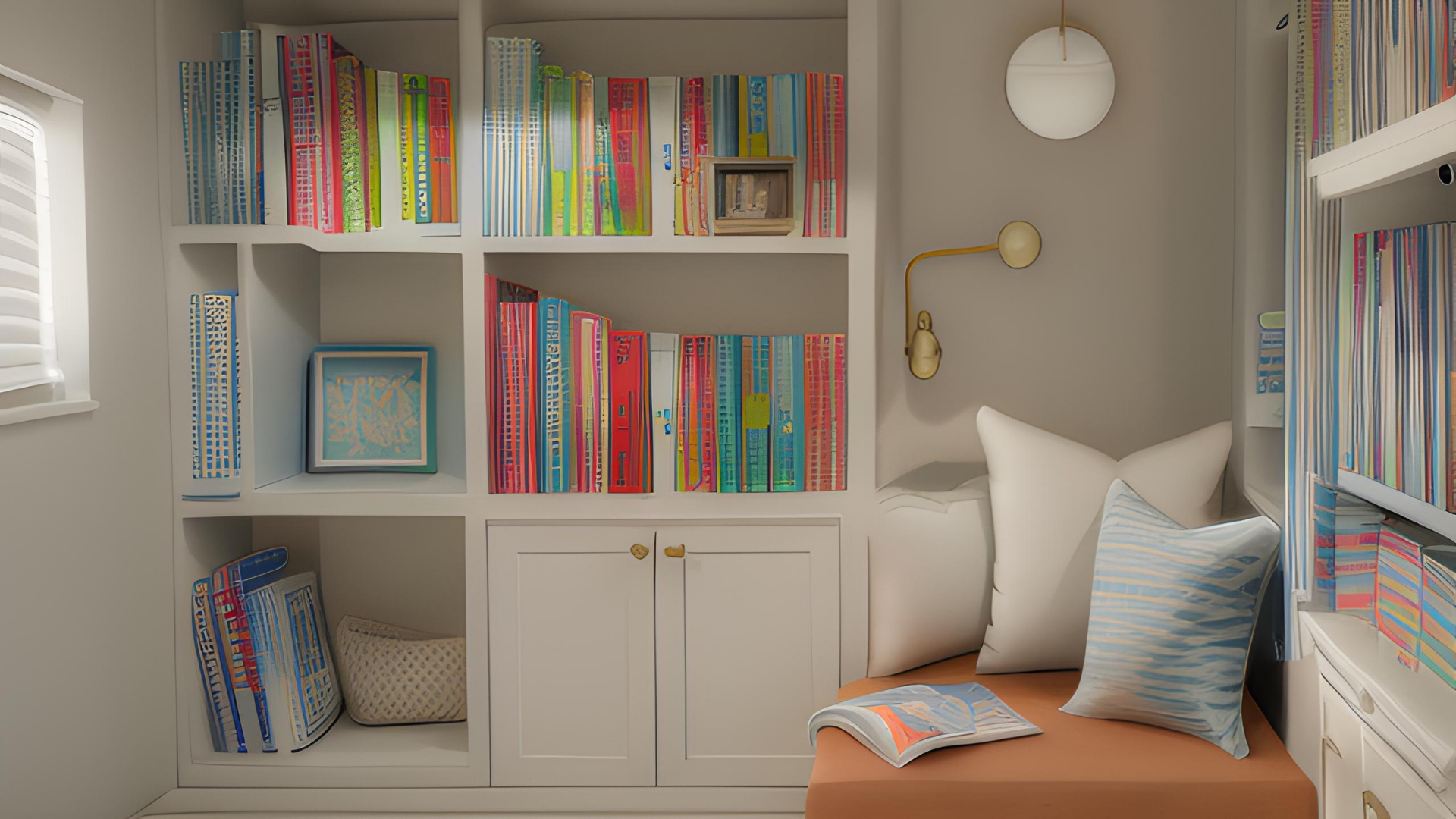
Cozy Reading Nook
In a small living room, creating a dedicated reading nook can be a delightful addition. This cozy corner offers a quiet retreat for reading, contemplation, or relaxation.
To design a comfortable reading nook, follow these steps:
- Select a Cozy Spot: Choose a corner or alcove that receives natural light and is away from the main traffic flow in your living room.
- Comfortable Seating: Invest in a comfortable chair or chaise lounge. Opt for plush cushions and soft upholstery to create an inviting space.
- Good Lighting: Ensure adequate lighting for reading. A floor lamp or adjustable wall sconces can provide focused task lighting.
- Side Table: Include a small side table for placing books, a cup of tea, or reading glasses.
- Personal Touch: Add personal touches like a throw blanket, decorative pillows, and artwork to make the nook uniquely yours.
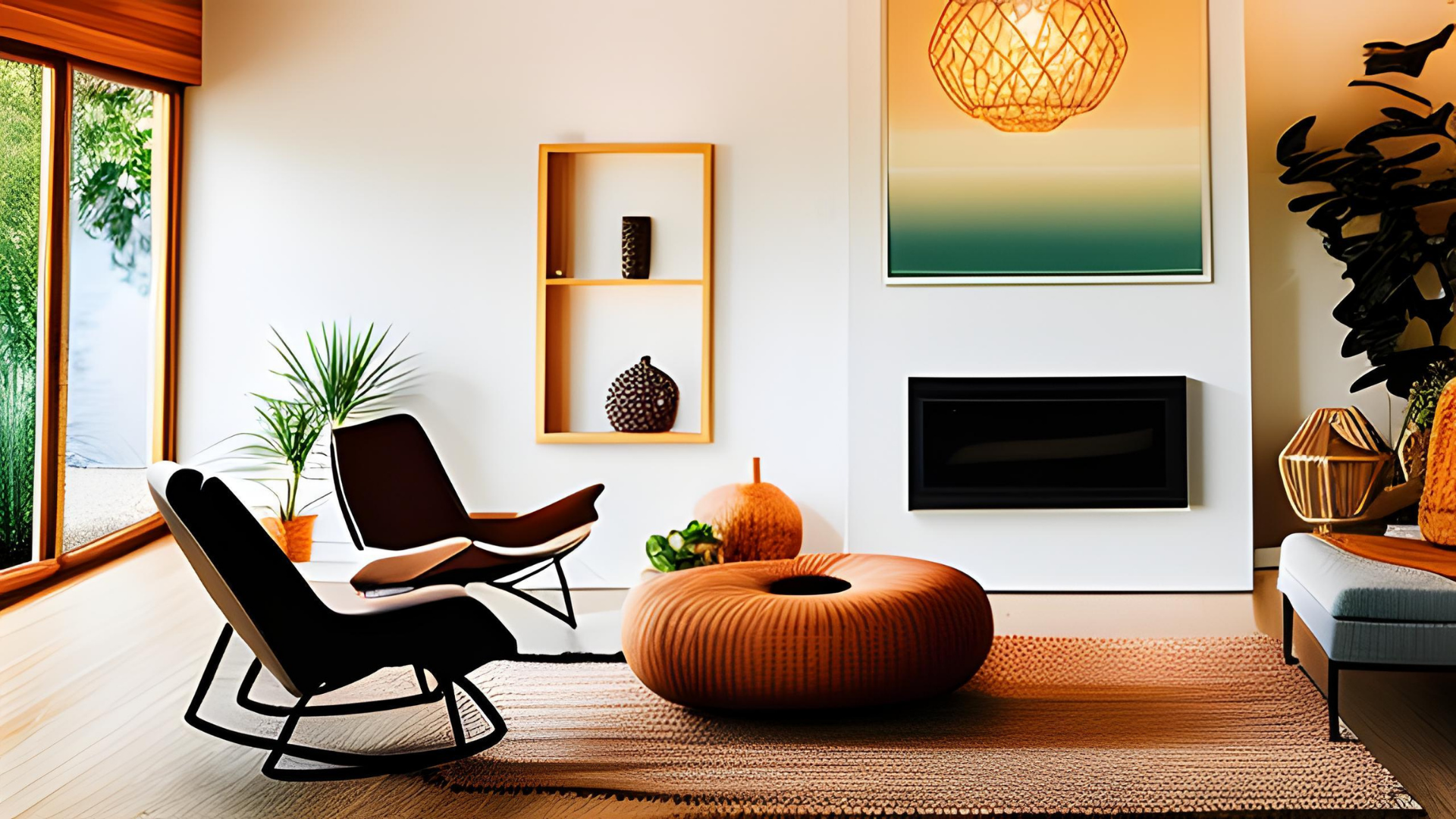
Personal Touch
Don't forget to infuse your living room with personal touches that reflect your style, interests, and personality. These elements can transform your space into a true reflection of who you are.
Here are some ideas for adding a personal touch to your small living room:
- Family Photos: Display framed family photos on a gallery wall or a dedicated shelf. This not only adds a personal touch but also creates a sense of warmth and connection.
- Artwork: Choose artwork that resonates with you. Whether it's a painting, a sculpture, or a collection of prints, art can be a powerful form of self-expression.
- Decorative Accessories: Select decor items that hold sentimental value or tell a story. These can include travel souvenirs, heirlooms, or handmade crafts.
- Textiles: Use textiles like throw blankets, curtains, and rugs to infuse color and texture into your living room. Choose patterns and fabrics that resonate with your aesthetic.
- Books and Collections: If you have a passion for books or collectibles, incorporate them into your decor. Bookshelves or display cabinets can showcase your interests.
- DIY Projects: Consider DIY projects that allow you to personalize your space. Whether it's creating custom artwork or upcycling furniture, hands-on projects can add a unique touch.
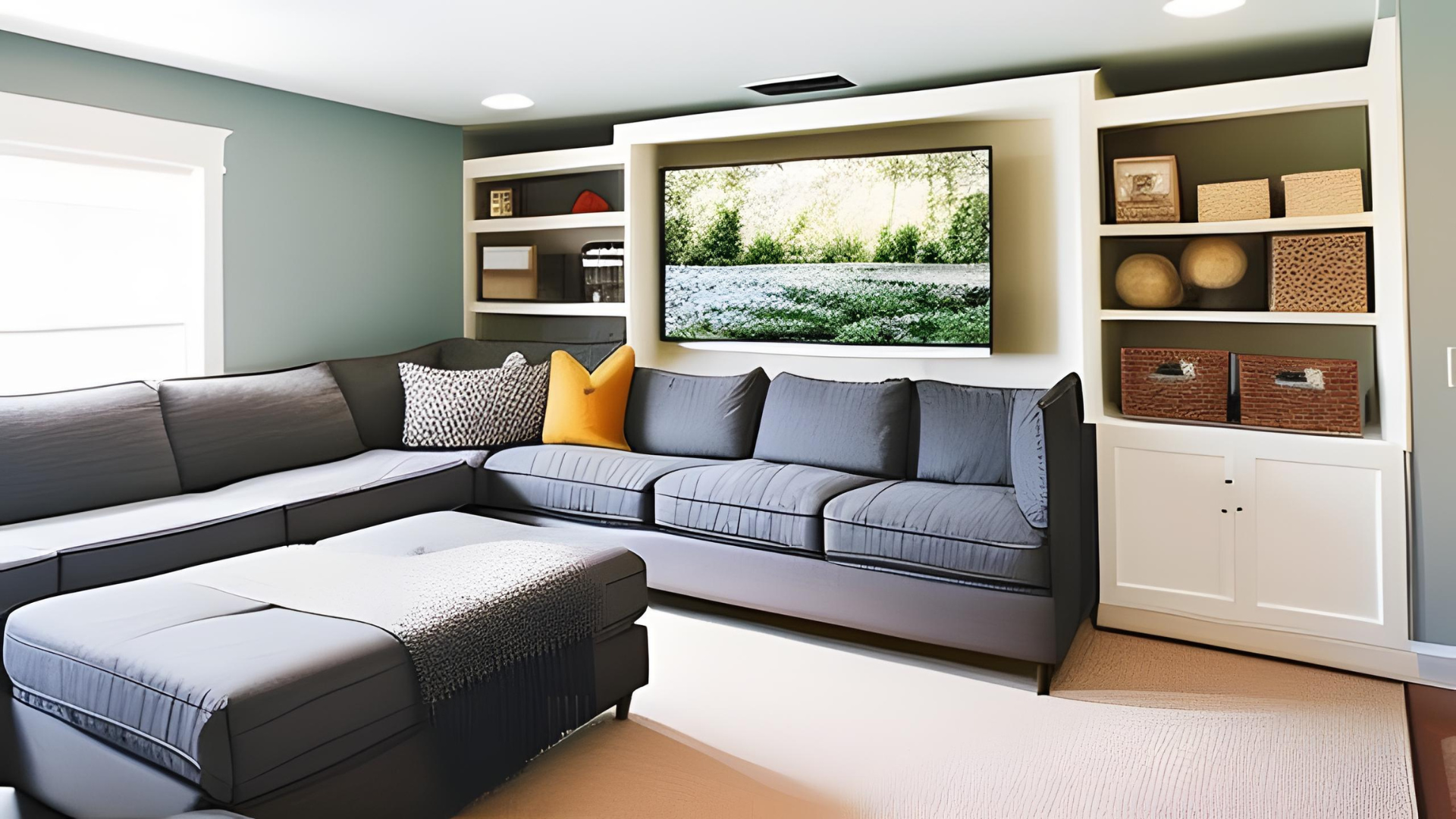
Smart Storage Solutions
Maintaining a clutter-free living room is essential for creating an open and inviting atmosphere. Smart storage solutions play a crucial role in achieving this goal.
Here are some tips for keeping your small living room organized:
- Declutter Regularly: Make decluttering a routine. Regularly go through your belongings and donate or discard items you no longer need.
- Hidden Storage: Invest in furniture with hidden compartments. Ottomans with storage, TV stands with concealed shelves, and coffee tables with drawers can help keep clutter out of sight.
- Vertical Storage: Maximize vertical space with tall bookshelves, cabinets, or wall-mounted storage units. These can store items while drawing the eye upward.
- Baskets and Bins: Use decorative baskets and bins to corral small items like magazines, remote controls, and toys. Label them for easy access.
- Floating Shelves: Install floating shelves on your walls. These can display decorative items while keeping surfaces clear.
- Furniture with Storage: Choose sofas, ottomans, and beds with built-in storage. These pieces can store extra bedding, pillows, or seasonal items.
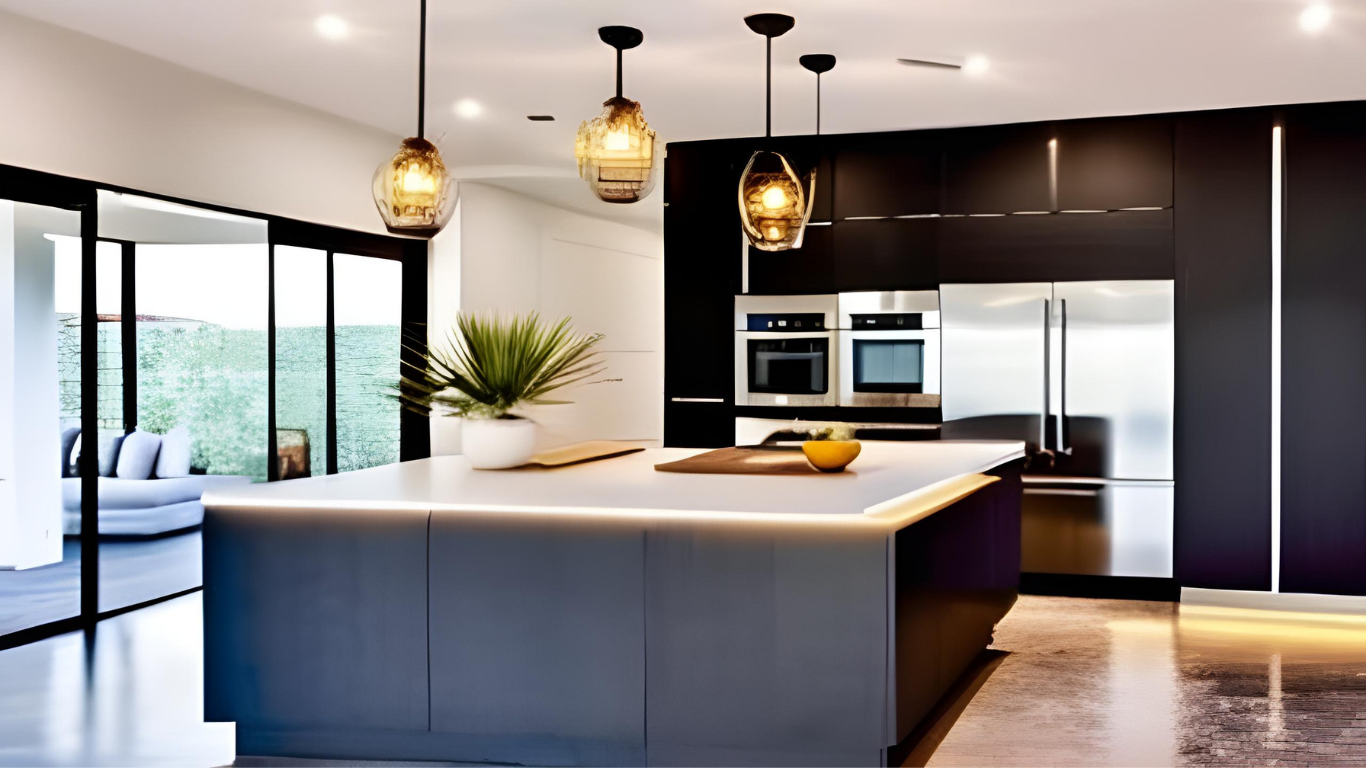
Flooring Transition
In an open concept living room that connects to other areas, such as the kitchen or dining room, the transition between different flooring materials can be a design challenge.
Here are some strategies to address this transition seamlessly:
- Consistent Material: If possible, use the same flooring material throughout the entire open concept space. This creates visual continuity and a sense of cohesion.
- Thresholds: Install thresholds or transition strips between different flooring materials. These strips create a clear separation while providing a finished look.
- Color Matching: If using different flooring materials is necessary, select options that are similar in color or tone. This minimizes the contrast and makes the transition less noticeable.
- Area Rugs: Use area rugs strategically to define separate zones within the open concept space. Rugs can act as a bridge between different flooring materials.
- Custom Flooring Designs: Consider creating custom flooring designs that incorporate both materials in a visually appealing way. For example, a decorative mosaic can serve as a transition element.
- Professional Installation: For a flawless transition, hire a professional flooring installer with experience in handling different materials and transitions.
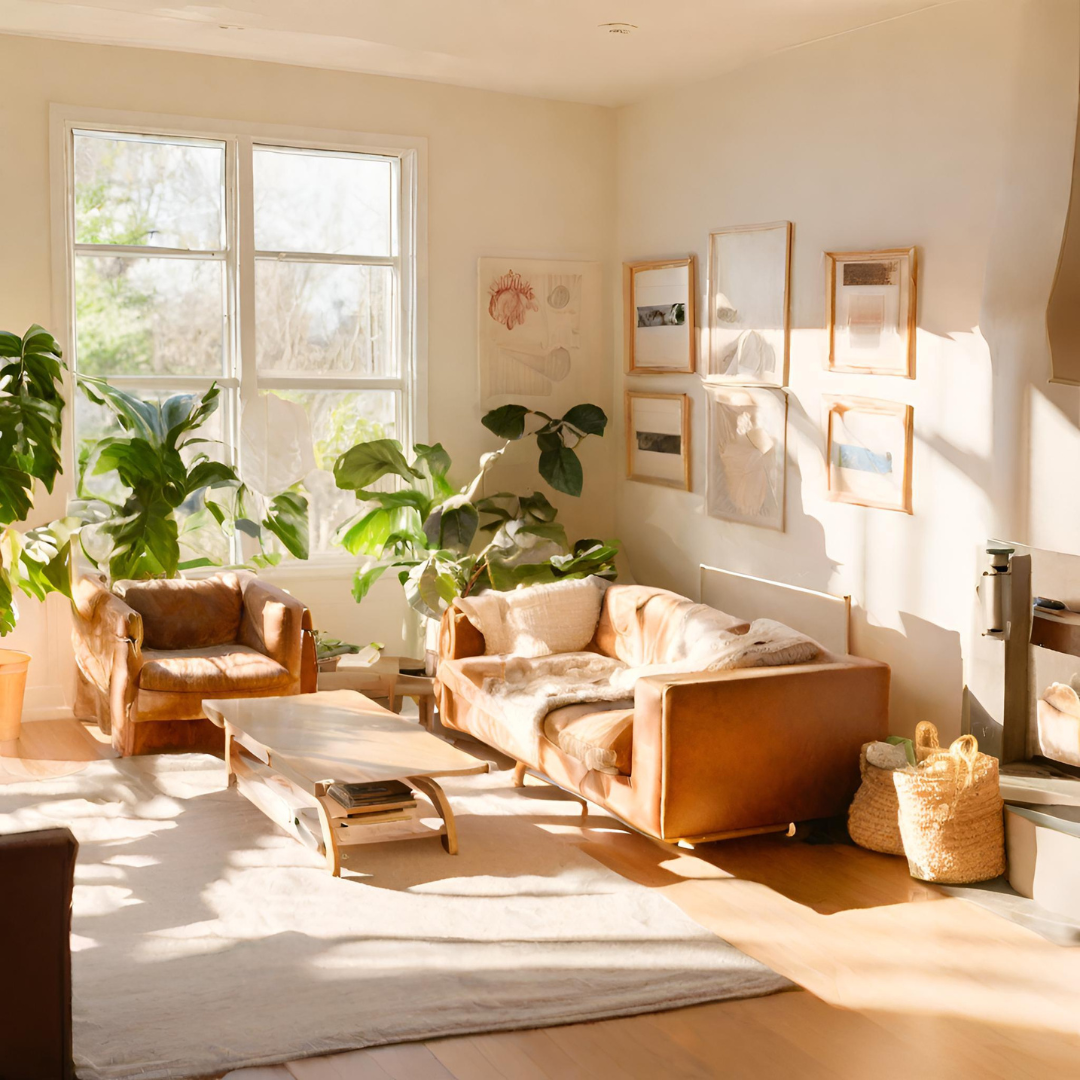
Sustainable Design
Embracing sustainable design principles in your open concept living room not only benefits the environment but also promotes a healthier and more mindful way of living. Sustainable design focuses on reducing the environmental impact of your space while creating a comfortable and healthy living environment.
Here are some ways to incorporate sustainability into your living room:
- Energy-Efficient Lighting: Use LED or CFL bulbs for energy-efficient lighting. Install dimmer switches to control light levels and reduce energy consumption.
- Natural Materials: Choose furniture and decor made from natural, renewable, or recycled materials. Sustainable options include bamboo, reclaimed wood, and organic textiles.
- Low-VOC Paint: Opt for low-VOC or VOC-free paint to improve indoor air quality. These paints release fewer harmful chemicals into the air.
- Energy-Efficient Appliances: If your living room includes appliances, such as a mini-fridge or wine cooler, select energy-efficient models that meet eco-friendly standards.
- Recycled and Upcycled Decor: Look for decor items made from recycled or upcycled materials. These pieces often have a unique character and reduce waste.
- Indoor Plants: Incorporate indoor plants into your decor. They not only purify the air but also create a connection to nature.
- Smart Thermostat: Install a smart thermostat to optimize heating and cooling efficiency. It can learn your preferences and adjust the temperature accordingly.
- Sustainable Fabrics: Choose upholstery fabrics that are eco-friendly, such as those made from organic cotton or recycled fibers.
- Waste Reduction: Reduce waste by investing in quality furniture and decor that will last. Avoid disposable or cheaply made items that contribute to landfill waste.
- Water Conservation: If your living room includes a wet bar or sink, install low-flow faucets to conserve water.
By adopting sustainable design practices, you not only reduce your environmental footprint but also create a living room that promotes well-being and conscious living.
Join our FREE Webinar here for a Guide to New Home Construction: bit.ly/newhomeconstructionfreewebinar
Q: How can I make a small living room look bigger?
A: To make a small living room appear larger, use mirrors, light colors, multi-functional furniture, and open shelving. These design elements create an illusion of space and openness.
Q: What are some space-saving furniture ideas?
A: Space-saving furniture ideas include sofa beds, wall-mounted desks, ottomans with storage, and nesting tables. These pieces maximize functionality while minimizing the footprint.
Q: How can I add personality to my open concept living room?
A: Add personality to your open concept living room by incorporating personal touches such as family photos, artwork, unique decor items, and textiles that reflect your style.
Q: Are there any tips for connecting an open concept living room to the kitchen?
A: To create a harmonious flow between an open concept living room and kitchen, use a consistent color palette, consider open shelving, introduce a kitchen island or bar, coordinate decor, and ensure consistent lighting styles.
Q: What is sustainable design, and how can I incorporate it into my living room?
A: Sustainable design focuses on reducing the environmental impact of your space. To incorporate it into your living room, choose energy-efficient lighting, natural and recycled materials, low-VOC paint, energy-efficient appliances, recycled and upcycled decor, indoor plants, a smart thermostat, sustainable fabrics, and waste reduction practices.
Q: How can I create a cozy reading nook in my small living room?
A: To create a cozy reading nook in your small living room, choose a comfortable chair or chaise lounge, provide good lighting, include a side table, add personal touches, and select a quiet and well-lit spot away from high-traffic areas.
Conclusion
Living large in limited space is not only achievable but also an opportunity to showcase your creativity and design prowess. By implementing the open concept living room hacks shared by transformative construction experts, you can transform your small living room into a functional, stylish, and inviting space that truly reflects your personality and lifestyle.
Remember, the key to success lies in optical illusions, multi-functional furniture, seamless flooring, vertical storage solutions, and a well-thought-out decor scheme. Whether you're embracing minimalism or infusing your space with personal touches, these strategies will help you maximize your living room's potential.
So go ahead, embark on your living room transformation journey, and watch as your limited space becomes a testament to innovative design and your unique style.
Join our FREE Webinar here for a Guide to New Home Construction: bit.ly/newhomeconstructionfreewebinar
Book a Meeting Here: bit.ly/zoom-book-a-meeting